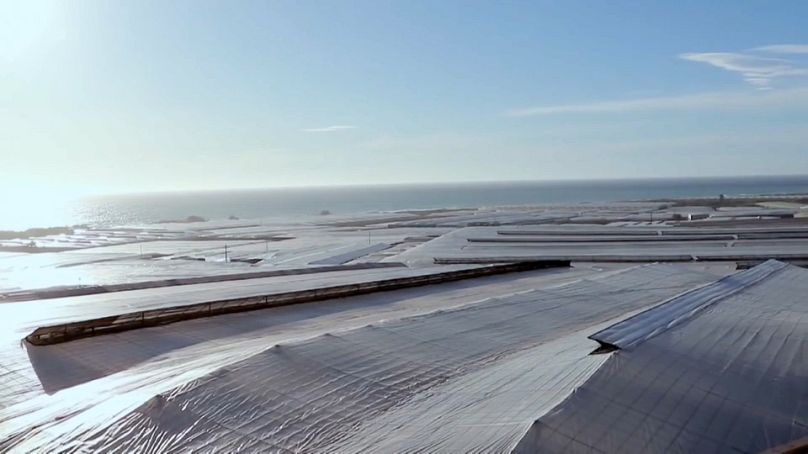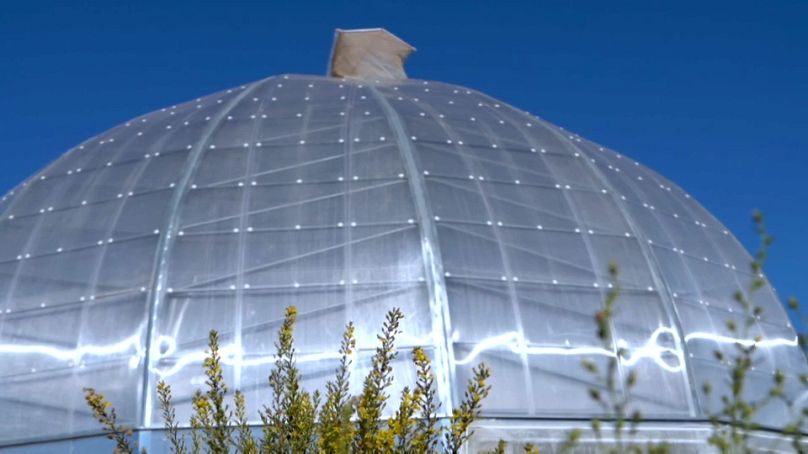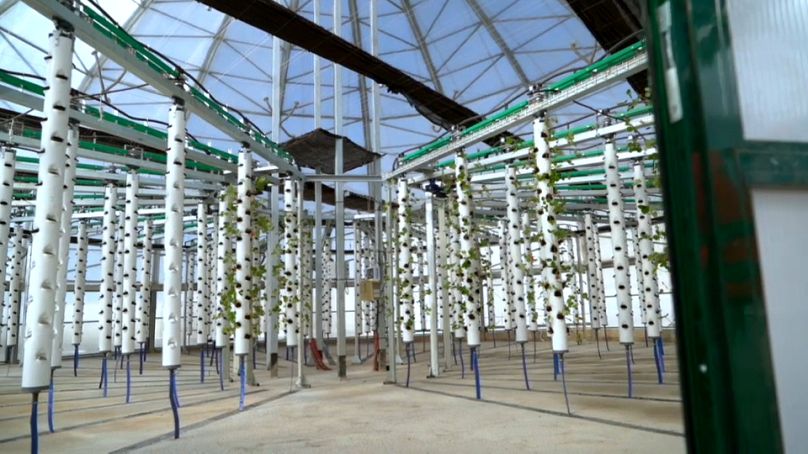The Greendomo project offers local, substainable agricultural productionb using vastly less space and water reserves than traditional farming. Euronews visits Spain to look at the project in action.
What was once a desert in Almería in southeast Spain is now a sea of greenhouses - and the orchard of Europe.
The intensive agriculture of the greenhouses has brought prosperity to the area via new techniques for growing fruits and vegetables.
A group of pioneering companies, working with both the Spanish Feder-Innterconecta programme and the Centre for the Development of Industrial Technology (CDTI) has created what may be a stepchange in terms of fruit and vegetable production: a greenhouse which can be used in a variety of outdoor spaces including parks and other green spaces, terraces or even the attics of urban buildings.
The next step is to more fully utitilise opportunities in city spaces, but using a bigger, dome-like structure, the Greendomo.
Juan Pardo, Technical Director of the Greendomo Project, explains the philosophy behind the structure:
"The Greendomo greenhouse is shaped like a globe, a geodesic dome. It's a structure made up of triangles, which is the simplest geometric shape that exists.
"Their consumption of energy and use of materials is kept to a minimum, so that there are no structural obstacles to the absorption of solar radiation for the plants, so that they can photosynthesise.
"The light energy is distributed here in a more even way, so that there are no shadows that harm the plants."
The Greendomo's vertical planting system with rotating columns allows the growing of crops all year round and the need for 70% less water. And the great tightness of its structure will protect them from adverse weather conditions and pests that affect pproduction quality in the more traditional agriculture.
The idea is that the Greendomo can be installed in parks, squares and even on the roofs of buildings.
Juan Pardo believes it could be even more profitable than production in the more traditional intensive agriculture systems:
"That's because you are addressing what I believe is the fundamental issue: proximity. You are saving on transportation, you are complying with the requirements of carbon footprint restrictions and then you are supplying a fresh product.
"The consumer is going to pay more for a product that they know has just been picked.”
Greendomo looks set to play a big role in urban farming and agriculture in the future. But it will require the support of governments and pioneering organisations willing to take a punt on it. That could help make a huge contribution to food security and could transform the everyday lives of city dwellers across the world.














